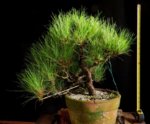jI-tx
Seedling
Hi guys, first post!
I'm just getting into bonsai and I'm curious about taking trees from the wild. I live in east texas where it is really humid and we've got tons of pines. Do you have any recommendations on how to start? What size pine should I look for and do you have any recommendations on what resources I should look into for training the pines?
Also, what threads or resources should I be looking at on this site or elsewhere?
Thanks guys!
I'm just getting into bonsai and I'm curious about taking trees from the wild. I live in east texas where it is really humid and we've got tons of pines. Do you have any recommendations on how to start? What size pine should I look for and do you have any recommendations on what resources I should look into for training the pines?
Also, what threads or resources should I be looking at on this site or elsewhere?
Thanks guys!

